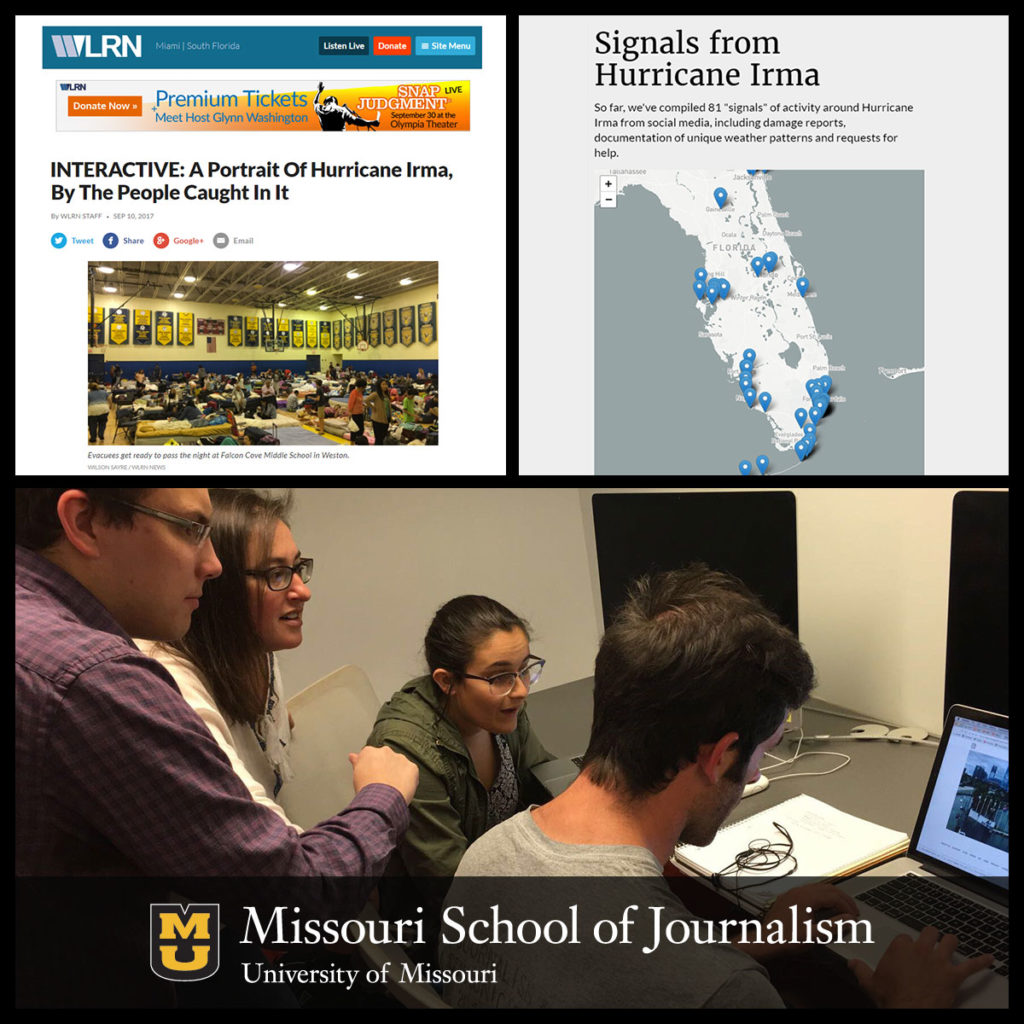Missouri Students Team Up with WLRN in Southern Florida to Help Tell the Story of Hurricane Irma Through Social Media

Geography Proves No Barrier to Assisting with Meaningful Breaking News Coverage
Columbia, Mo. (Sept. 19, 2017) — A team of Digital Reporting students from the Missouri School of Journalism teamed up with WLRN Public Radio and Television in southern Florida to support its social media monitoring during the peak of Hurricane Irma. Students, working under the direction of Convergence Journalism faculty member Amy Simons and KBIA-FM Digital Content Director Nathan Lawrence, identified social media dispatches that told the story of the storm through the eyes of the people experiencing it.
Under Lawrence and Simons direction, students were able to compile “signals” of activity around Hurricane Irma from social media that included damage reports, documentation of unique weather patterns, and requests for help. This information was then mapped and users could click on “pins” to see the information.
According to WLRN’s Sammy Mack, “We quadrupled the station’s digital team today.”
“Increasingly, news organizations are finding the deep dive into social media is a powerful reporting tool,” said Associate Dean Lynda Kraxberger. “Though everyone has the ability to use social media, Missouri students have an advantage as their classwork prepares them to verify information in the event of an important breaking news story.”
Lawrence built the infrastructure for this collaborative effort by hand, using a framework based on experience from ProPublica‘s 2016 Electionland. Electionland was a project involving 100 newsrooms across the country to cover the 2016 presidential elections. The School was one of 13 journalism programs in the nation selected to participate in First Draft, a coalition of social newsgathering and verification specialists to monitor, flag, and report on problems that emerge on social media and was part of Electionland.
“WLRN was so excited when they heard that Missouri was an Electionland school with faculty and staff on hand to help students use the workflow,” Simons said. “The Missouri team vetted every mapped data point using Twitter, Signal and Banjo. Other students, both undergraduate and grad students, helped cut tape, do re-write work and ensure the map stayed current.”
Simons was quick to point out the unique circumstances of this latest collaboration. “Covering hurricanes in real time? That’s not something we normally get a chance to do in our traditional Missouri Method newsrooms. Being able to put our experience and expertise to good use for colleagues halfway across the country was a valuable experience for our students and for me. I know I’ll never forget it.”
Back row, left to right: Digital Content Director Nathan Lawrence, Associate Professor of Convergence Journalism Amy Simons. Front row: Students Allison Pecorin and Travis Meier. Photo: Dallas Parker; website images courtesy WLRN.
Updated: October 23, 2020